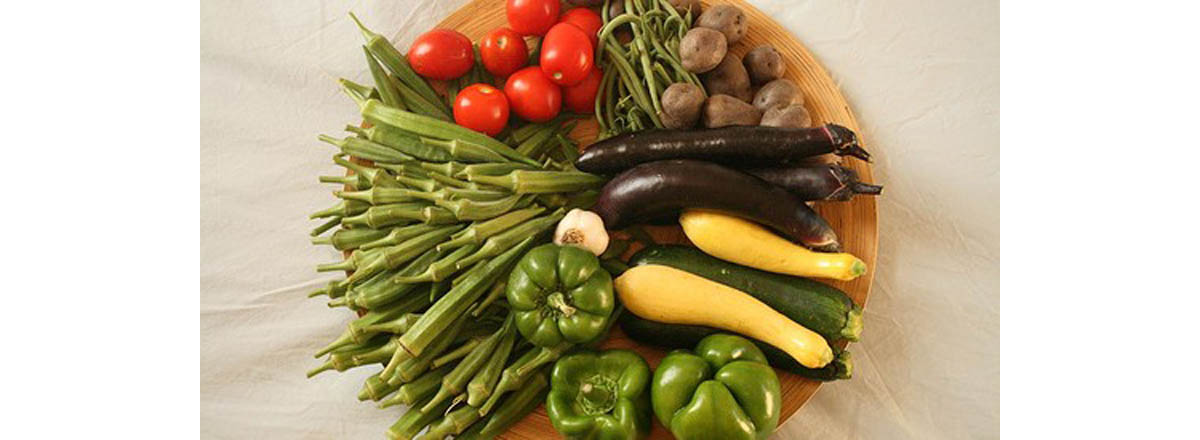Table of Contents
The Dash diet is more about what you do eat than it is about what you don't. It is more important to add healthy sources of potassium, magnesium, and calcium in your diet than it is to eliminate sodium, although you will want to cut back on sodium-laden salty foods, too.

Start with a Stop at the Produce Counter, or Your Local Farmer's Market
The first thing you need to do to start the DASH diet is to make a stop at your market's produce counter, or visit your local farmer's market. Fresh fruits and vegetables are the most important part of the DASH diet.
If you don't eat any "fresh stuff" at all, you should start gradually. In the clinical testing of the DASH program, just about the only unpleasant effect was, surprisingly, constipation in people who had never, ever eat fruits and vegetables before. If you are in that category, buy just enough produce to provide 2 or 3 servings of fruits and vegetables per day per person in your household, making sure you buy at least some salad greens and some fruit. Potatoes and dried beans do count as vegetables, but only one serving per day of each. (You can eat more beans and potatoes if you wish, but you need to make sure you get a variety of plant foods to make the diet work.)
The next time you go the market, buy enough produce to provide everyone in your household with at least 3 or 4 servings of plant foods per day. Then work up to 5 or more. Dried fruit such raisins and apricots are an excellent source of potassium, and can help you fill in the gap when you just don't have time to go to the market.
Make a Habit of Planning Your Meals
Fast food is the enemy of the DASH diet. The problem isn't so much the calories and fat as the salt. Fast foods are heavily salted to cover up the tinny or frozen tastes that come with the food. A single fast-food meal can provide more sodium than your body needs for two days, and your kidneys will dilute the sodium from the salt in the food by retaining water. You'll be puffier. You'll weight more. And your blood pressure will go up slightly.
If you make a habit of planning healthy meals you prepare yourself, however, you can get your potassium and avoid the sodium. You'll also save money--assuming you use your produce before it spoils!
Back Away from Salty Foods
The DASH diet also requires reduction in the consumption of salt.
If you just can't give up your kimchi or your cold cuts, at least make sure to get your potassium-rich fresh produce daily, to keep electrolytes more nearly in balance.
It also helps to stow away your salt shaker. Season food with Mrs. Dash spice blend (the makers of Mrs. Dash were in business before the DASH study, and the similarity of the names is only coincidental). Don't use a salt substitute if you take an ACE-inhibitor or an ACE-receptor blocker for existing high blood pressure. If you don't know whether your medication is in these classes, ask your pharmacist. Using potassium chloride salt substitutes while taking either an ACE-inhibitor or ACE-receptor blocker can cause dangerous build up of potassium in the bloodstream.
But try to reduce or eliminate salty foods altogether. See if it doesn't make a difference in your blood pressure.
How many extra years can you expect to live if you follow the DASH approach to your diet? The simple fact is, we don't really know.
Just don't go overboard. It is still necessary to consume at least a little salt to supply your body with sodium. Going totally off your program once a week won't hurt (unless your doctor tells you never, ever to eat salt). And you don't have to buy out the produce counter, either. Up to nine servings of fruits and vegetables per day may helpful, but the benefits stop at nine servings per day.
- Azadbakht L, Surkan PJ, Esmaillzadeh A, Willett WC.The Dietary Approaches to Stop Hypertension eating plan affects C-reactive protein, coagulation abnormalities, and hepatic function tests among type 2 diabetic patients.J Nutr. 2011 Jun.141(6):1083-8. doi: 10.3945/jn.110.136739. Epub 2011 Apr 27.
- Lichtenstein AH, Appel LJ, Brands M, Carnethon M, Daniels S, Franch HA, Franklin B, Kris-Etherton P, Harris WS, et al. Diet and lifestyle recommendations revision 2006: a scientific statement from the American Heart Association Nutrition Committee. Circulation. 2006.114:82#x2013967.

